I was born in 1956, and grew up among a large number of WWII veterans. Members of both my parents’ families served in the war and, fortunately, none lost their lives. I’ve met many other Second World War veterans and learned of others; all have inspired me over the years. Although this posting is more relevant to Veterans Day than Memorial Day, I would like to recognize some of them and share their experiences.
Recognizing WWII Veterans
* Hank Korabik, US Army — My mother’s Uncle Hank, served in the Headquarters Battery of the 460th Parachute Field Artillery Battalion (75mm Pack Howitzer), part of the 517th Parachute Regimental Combat Team in the pursuit north of Rome, the Invasion of Southern France (his only combat jump), the Battle of the Bulge, and the Hürtgen Forest. I remember him as a funny, carefree, guy who thoroughly enjoyed life and never openly dwelt on his extensive experiences of war in four campaigns in the European Theater of Operations (ETO).
* Earl Ryan, US Army — Earl was our neighbor in Chicago in the 1960s while I was in grade school. He was a combat infantryman, a platoon sergeant if my memory serves me right, but I don’t recall his regiment or division. I do remember that he was badly wounded in both legs during the Battle of the Bulge. Earl would do anything for anyone and led a full life, despite still suffering badly from his wounds.
* Seymour “Pete” Peters, US Army — Although Peters was the father of one of my close friends, I never had the opportunity to meet him. A combat infantryman in both the Mediterranean and European Theaters of Operations, Staff Sergeant Peters experienced more than his fair share of combat. He was inducted on 27 July 1943, trained as an infantry replacement, and in March 1944 was assigned to Company A, 180th Infantry of the 45th Infantry Division — just in time to participate in some of the worst fighting at Anzio. He then fought from southern France into Germany. In all, he experienced 14 months of combat in miserable weather and difficult terrain that damaged his health, followed by an all-too short life filled with stress and an unexpected sudden death on 4 September 1969. As my friend expressed it, his father was as much a casualty of the war as those who died on the battlefields.
* John D. Bulkeley, US Navy — Lieutenant Bulkeley commanded the MOTOR TORPEDO BOAT SQUADRON THREE detachment in the Philippines when the Japanese attacked. In March 1942, he commanded the four Patrol, Torpedo Boats (PTs) on which General MacArthur, his family, and members of his staff were evacuated from Corregidor to establish the Southwest Pacific Theater in Australia. Bulkeley received the Medal of Honor for his actions in the Philippines, commanded the PTs and minesweepers that protected Utah Beach from attack by German torpedo boats, and eventually retired in 1975 as a Rear Admiral. He was recalled to active duty to head the Navy’s Board of Inspection and Survey, which assesses the operational readiness of warships. I met Vice Admiral Bulkeley in 1979 when he inspected the USS O’BANNON and dined with the ship’s officers in the wardroom. He retired in 1988, after serving on active duty for 55 years.
* Kenneth J. Gee, US Army — My father-in-law attended the University of Iowa, a land grant college that required participation for two years in the Reserve Officer Training Program. However, he chose to continue ROTC for four years while continuing to work toward his MD degree. On 5 June 1939 he received that degree and a commission in the Medical Corps as a First Lieutenant. World events led to his remaining on active duty as an instructor at the medical training facility at Camp Grant, IL, an assignment that lasted one and a half years. He was then assigned to the 54th General Hospital, which was sized and equipped to provide the fourth-echelon of medical care in the rear area, and was promoted to Major. The 54th departed San Francisco on 8 March 1944 and eventually arrived at Milne Bay, New Guinea, where the hospital grew in size to 3,500 beds and became the largest overseas Army hospital. In anticipation of treating casualties from the planned invasion of Japan, Lieutenant Colonel Gee led an advance party to the Philippines to find a new location for the hospital. However, events intervened. In the aftermath of the surrender of Japan, the new hospital was loaded on two LSTs and taken to Yokohama, the port city for Tokyo, to provide medical support to the US occupation forces. Dr. Gee declined the opportunity to transfer to the Regular Army and was discharged as a Lieutenant Colonel. After settling his wife and family in his hometown of Shenandoah, Iowa, he joined the Army Reserve, giving lectures and immunizations as the only Reserve Army doctor in southwest Iowa. Retiring as Colonel in 1973, he lived to be almost 100 and enjoyed collecting a large monthly military retirement check for nearly 40 years.
I have always liked Ken’s closing comment in his memoirs regarding his military service: “The War took five years, five months, and twelve days out of my life, but I was young then and the adventure was appealing. I enjoyed the characters one meets in barrack life. There are more comedians and goofballs per square foot than anyplace in the world. There are always guys who have all the angles figured out, or can do a midnight requisition for unauthorized food, booze, or equipment. Their ingenuity and resourcefulness is unending. They would give you their last beer. They would also put a large firecracker under your bunk. They are the American GI — the salt of the earth.”
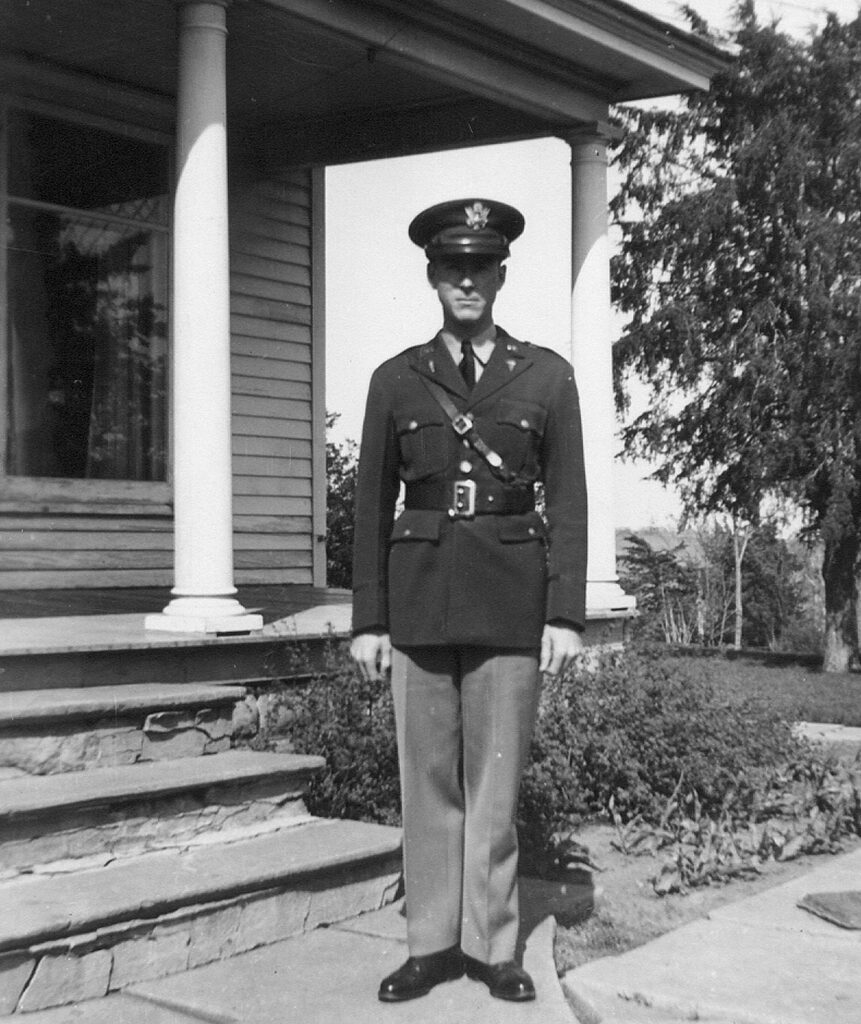
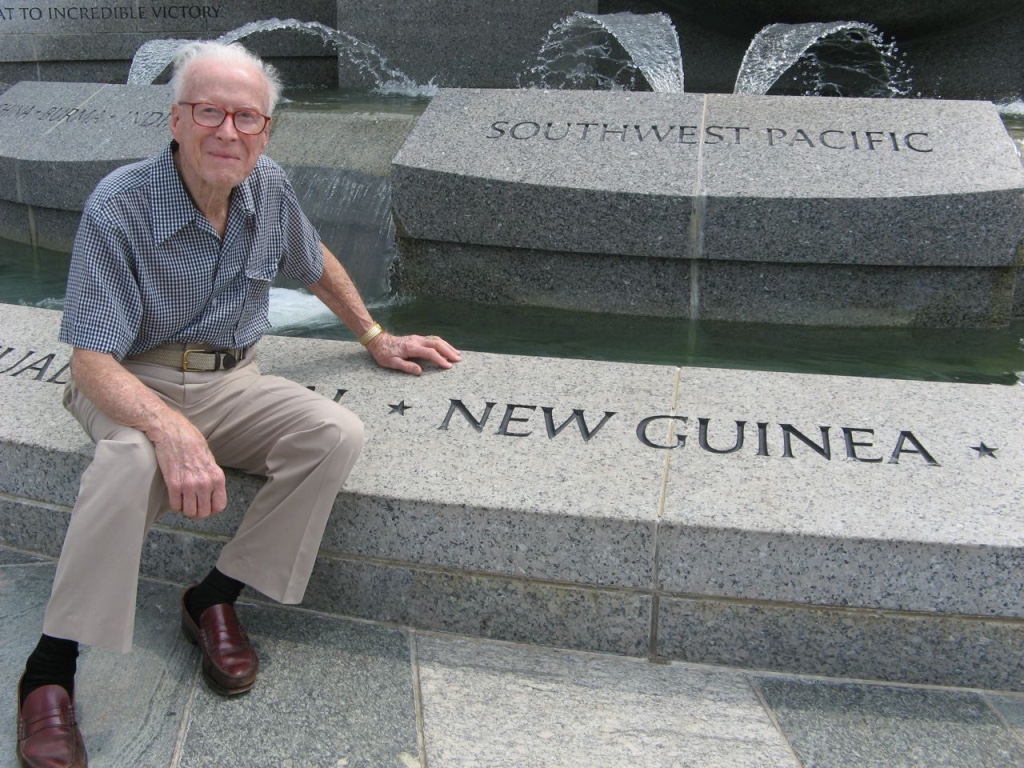
* Senator J. James Exon, US Army — Jim Exon served in an Assault (Amphibious) Signal Corps Company, spending two years in New Guinea, the Philippines, and Japan. In December 1945 he was advanced to Master Sergeant and remained in the Army Reserve until 1949. I was fortunate to serve as his Legislative Assistant for Defense, Foreign Policy, and Veteran Affairs for 6 years, spanning two terms of office. The Senator took great pride in being one of the few members of Congress who had served in the enlisted ranks and he particularly enjoyed making Generals and Admirals cool their heels when they called on him. In early 1988, he led a bipartisan delegation of six Senators to meet on national security matters with allies and friends in the Pacific. A representative from the Defense Department’s Office of Legislative Affairs and an Army escort officer assisted me in planning the trip and escorting the Senators and their wives. On this trip, we visited the first WWII battlefields I ever saw — Pearl Harbor, Guam, Manila, Bataan, and Corregidor.
* Senator Howell Heflin, US Marine Corps — Senator Heflin led Marines in combat on Bougainville and Guam, received the Silver Star and two Purple Hearts, and was a Major when he was discharged in 1946. Senator Heflin was one of the five other Senators on the Exon Pacific trip. Upon learning that Heflin was coming to Guam, the people of that island prepared a great gathering to honor “their liberator.” Senators Exon and Heflin both advocated for a strong national security posture, a position that was greatly influenced by their own experiences in WWII.
* Clyde O. Combs, US Navy — On 28 September 2008, Margot and I attended the dedication of the US Navy D-Day Monument on Utah Beach. There we met this D-Day veteran, a Quartermaster Second Class (in the Navy a quartermaster is a navigator), who served onboard PT-515 on D-Day and over the following weeks. At the dedication ceremony, Clyde was deeply moved by the long line of French kids asking for his autograph. We stayed in touch with him and, when he came to Washington DC for the final meeting of the PT Boat veterans association, we took him to the National WWII Memorial. There, Clyde found himself surrounded by other visitors who were excited to meet a D-Day veteran. In 2009, Clyde received the Légion d’honneur for his D-Day service at a military ceremony at les Invalides in Paris. The next day, on the 65th anniversary of D-Day, at the American Normandy Cemetery and Memorial, Clyde told the Presidents of the US and France, the Prime Minister of Canada, and the Prince of Wales about his D-Day experiences. I was very honored to receive one of Clydes’s beautifully-drawn nautical charts of PT-515’s operations off Normandy. Ninety-seven years young, Clyde is the only veteran mentioned in this posting still living.
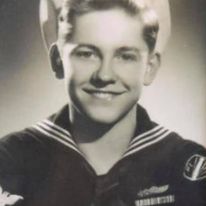
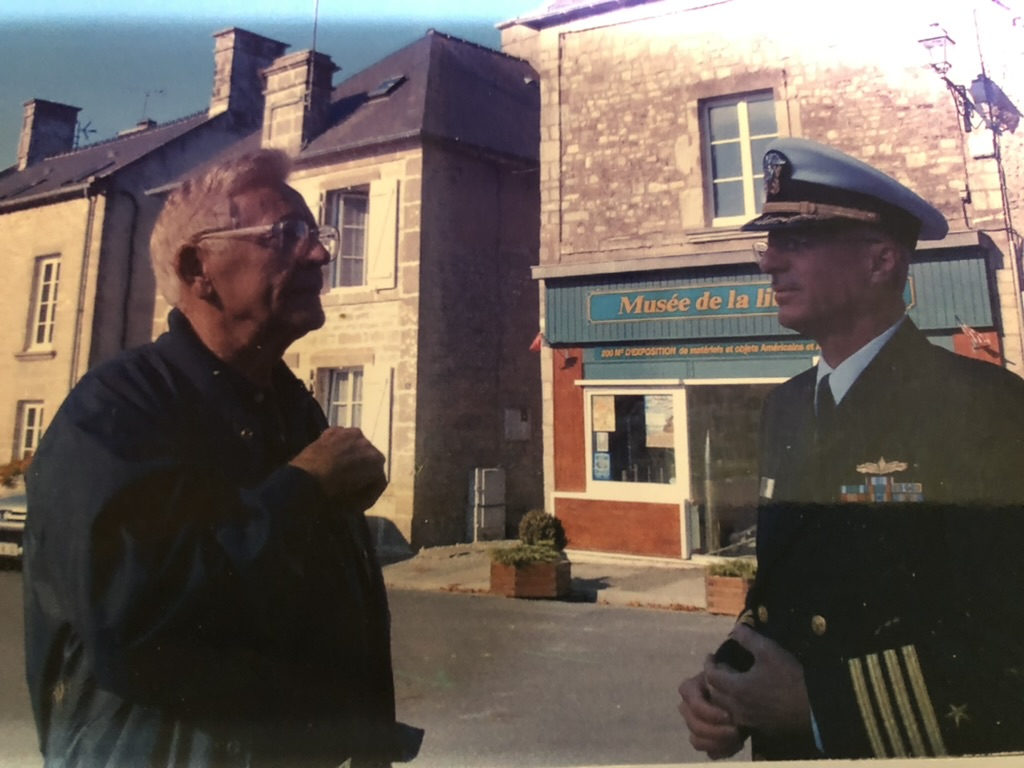
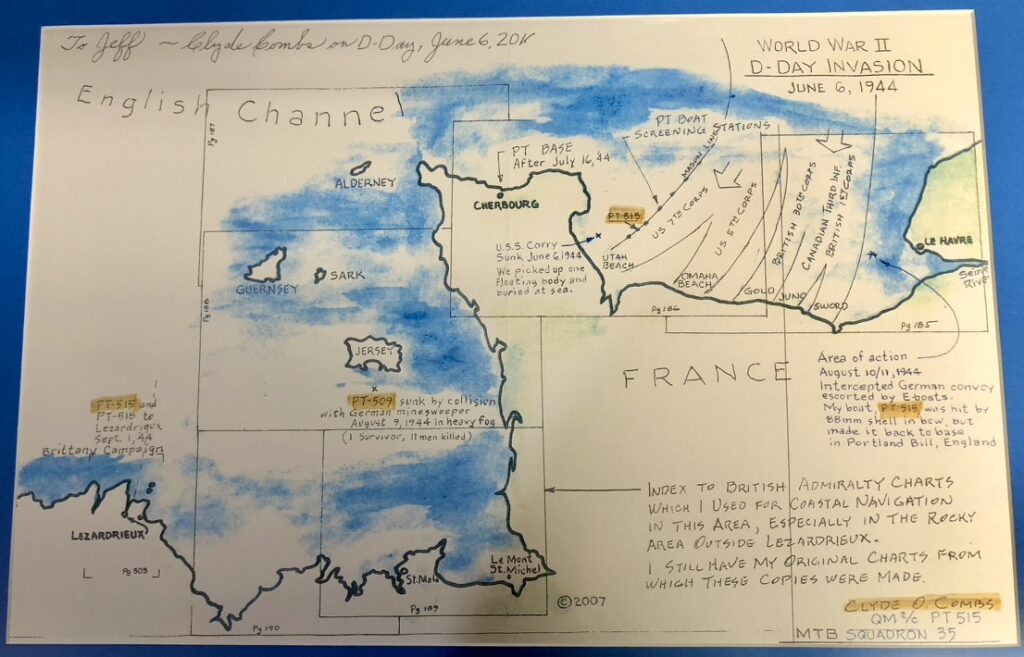
* Hayden Jones, US Army Air Force — I met Hayden when we retired to Margot’s hometown of Shenandoah, Iowa. Hayden was trained as a B-24 Liberator navigator. However, just before his crew departed for Brazil en route to North Africa, he was reassigned to train other navigators until the end of the war. Hayden later learned that the entire crew were lost in a raid over Italy.
* James Sligar, US Army — PFC James Sligar trained as an infantry replacement and, shortly after D-Day, was assigned to the Third Platoon of Company I, 23rd Infantry, 2nd Infantry Division, where served as his squad’s Browning Automatic Rifleman. Before meeting him, I was told that he had said very little about his wartime experiences, so I approached him rather carefully. My timing was good as he was ready to talk about his wartime service. Together, we wrote a 91-page booklet for his family and friends that covered his training and combat in Normandy, Brittany, Belgium, and Germany. James was badly wounded on 18 December 1944 and received medical care until being discharged from the Army on 27 October 1945.
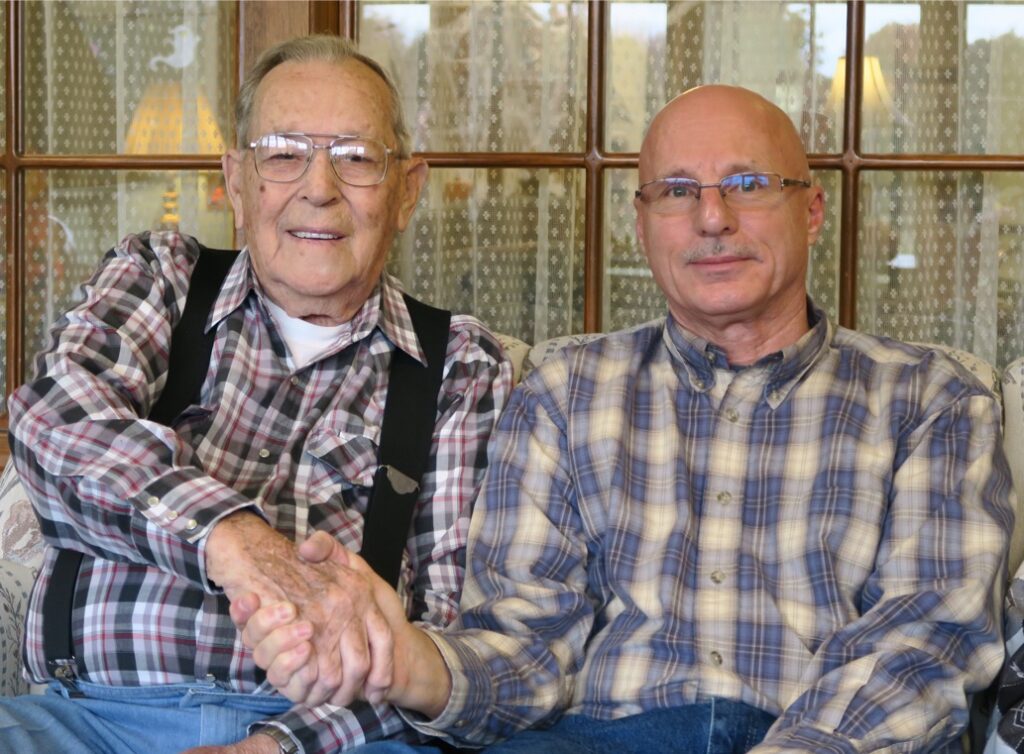
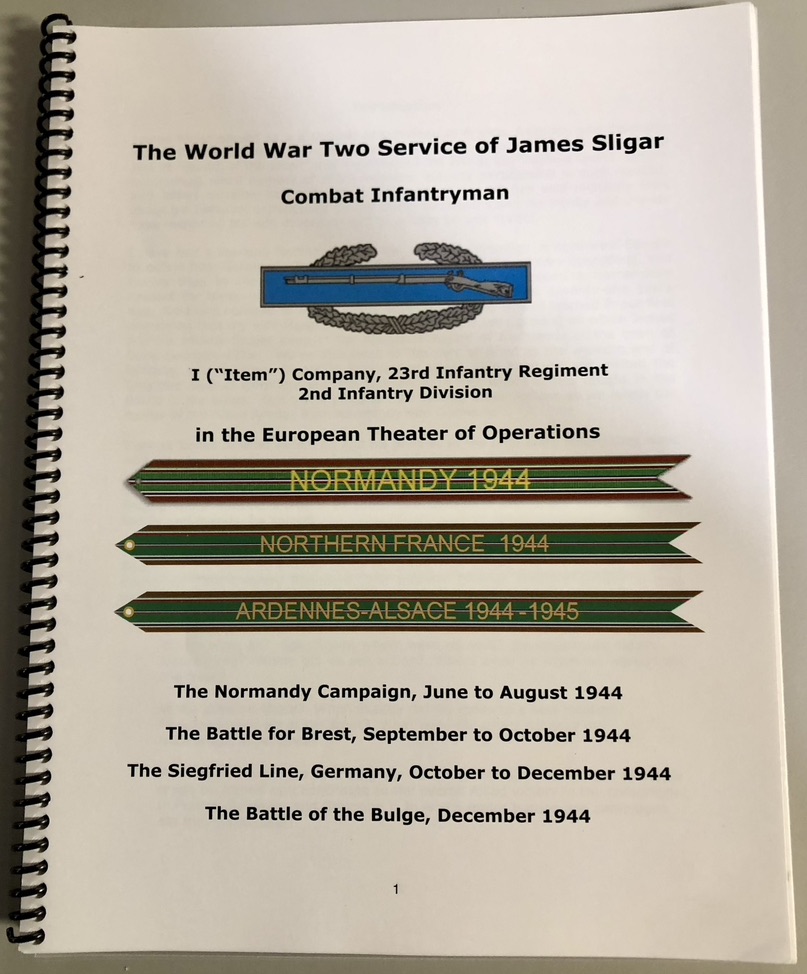
* Lieutenant Colonel Max Schneider, US Army — I never met Max Schneider. I first learned about him in 2011 on a trip to Normandy when we visited the Ranger Museum in Grandcamp-Maisy. While watching a film there, Margot and I were surprised to hear the narrator mention his name and state that he was a native of Shenandoah. After we moved to Shen in early 2013, I asked about him around town. Few seemed to recall him, and none offered any information about him. I thought that odd since Schneider was one of the officers who turned the tide of the battle on Omaha Beach.
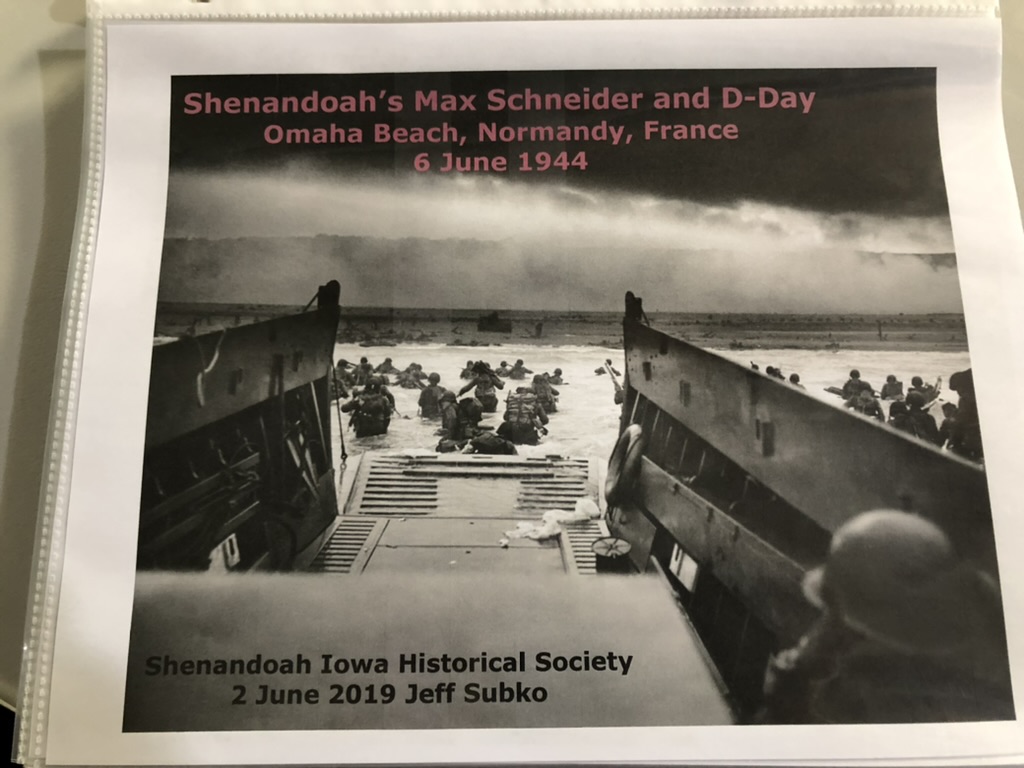
Then I discovered that his son had written a book about him, My Father’s War — The Story of Max Schneider, A Ranger Commander. Schneider was a born soldier and leader. He enlisted in Shenandoah’s Company E, 163rd Infantry of the Iowa National Guard in 1930. Seven years later he became an NCO and in 1939 was commissioned as a Second Lieutenant. The regiment, as part of the 34th Division, was inducted into Federal Service on 10 February 1941. By the end of that year, he had been placed in command of Company E and remained in that post until the division arrived in the UK — the first division to do so. Schneider was soon transferred to the newly established 1st Ranger Battalion, one of 470 men selected from among 2,000 volunteers. Schneider fought in North Africa, was the executive officer of the 4th Ranger Battalion in Sicily, badly wounded at Salerno, and evacuated to England.
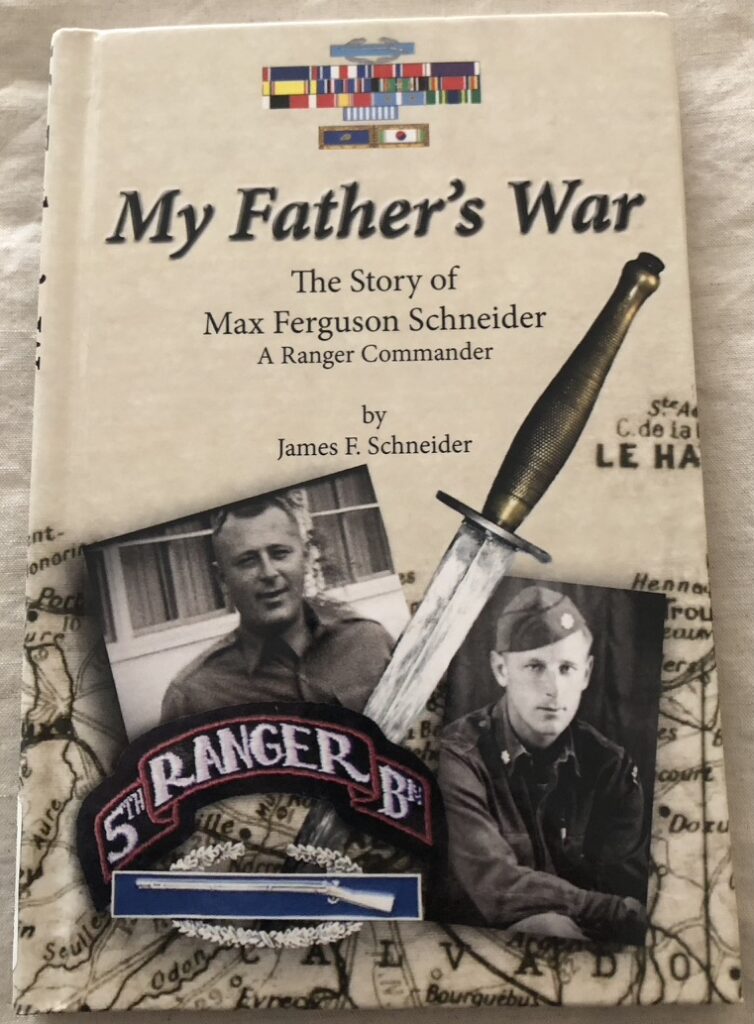
Given the serious nature of his wound and exhausted by battle, he expected to be transferred back home to train other Rangers. Instead, he found himself in command of the 5th Ranger Battalion and that part of the 2nd Ranger Battalion not included in the attack on the German gun battery at Pointé du Hoc. Lieutenant Colonel Schneider’s mission was to land his battalion, move off the beach through the Vierville-sur-Mer Draw and march to the relief of the Rangers at Pointe du Hoc.
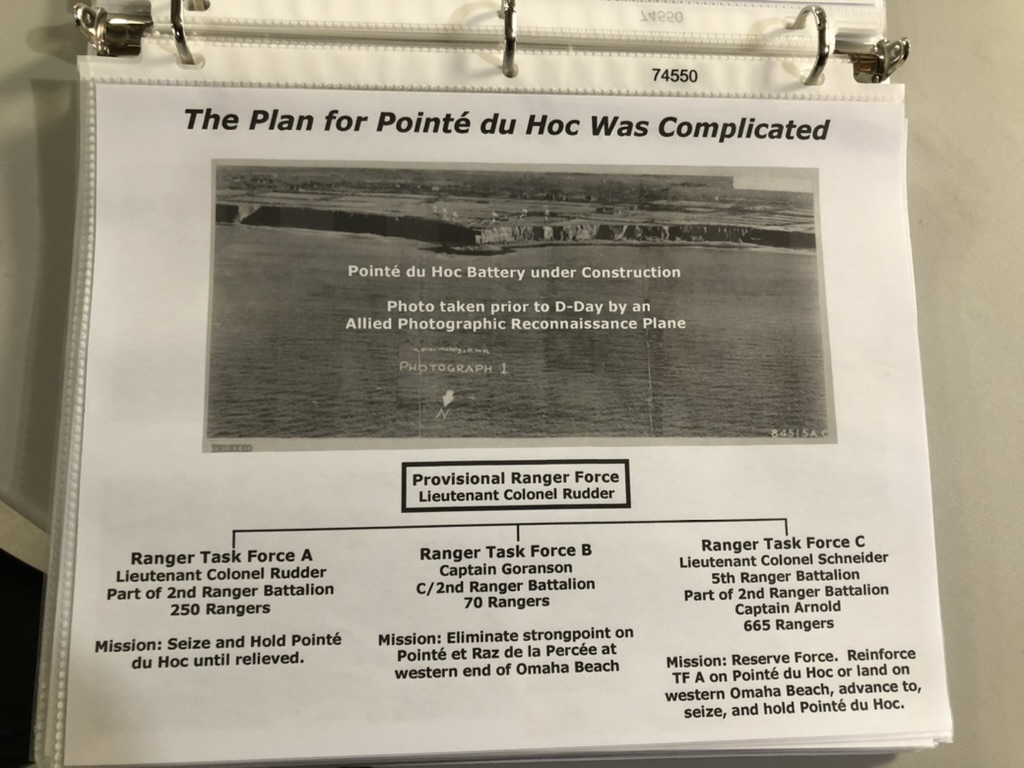
As the landing craft carrying his men approached Omaha Beach, he saw the slaughter taking place at the intended landing spot. On his own initiative, he directed the craft ashore farther to the east where there was less resistance. In doing so, he provided the first intact battalion on this part of Omaha Beach and led his men up the cliffs and inland, turning the tide of battle at the western end of Omaha Beach. For his initiative and heroism on Omaha Beach, he received the Distinguished Service Cross (DSC), the Army’s second highest decoration for valor.
He was transferred back to the States where he continued to advance in his Army career, saw more combat in Korea, was promoted to Colonel, and held a series of important command and staff positions. Throughout his career he dealt with PTSD — a condition not understood and with little available treatment at the time. His son, James F. Schneider wrote that: “Schneider’s self-medication was alcohol, the drug of choice for warriors over the centuries.”
In early September 1958, he was assigned as the Operations Officer for the US Eighth Army in South Korea — a position which indicated that, despite his drinking, the Army still valued his service. However, the posting required leaving his family behind in Shenandoah. Without their support, his drinking worsened and, potentially facing disciplinary action, he shot himself.
His son wrote that: “Shenandoah, the town that once adulated him, turned its back on Schneider and declared his death a shameful act…. His widow tried to live on in Shenandoah, her hometown, but after a couple of years, she could no longer stand it and moved to New Mexico where Army friends from Germany had retired. She made a life for herself there and died, still a widow, in Santa Fe in 1996.”
When the Ranger Hall of Fame was established at Fort Benning GA in 1992 to honor and preserve the spirit and contributions of America’s most extraordinary Rangers, Colonel Schneider was chosen as one of its inaugural members.
I was shocked upon learning the circumstances of his death. On 2 June 2019, I spoke about Schneider at the Greater Shenandoah (Iowa) Historical Society. Nearly 100 people were in attendance — a packed audience in this small town. In 2021, the town honored Schneider by adding a plaque in his honor on Shenandoah’s “Iowa Walk of Fame.” This tribute simply reads: “Led Rangers on D-Day.” For a soldier, that says it all.
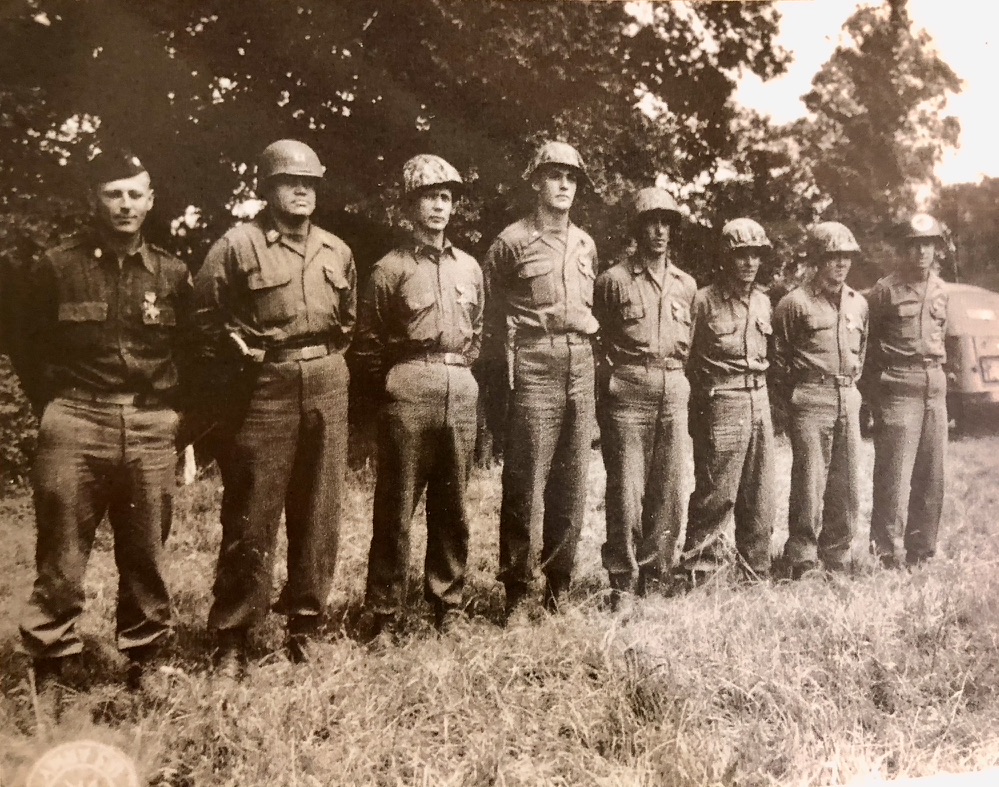
* Edgar L. “Ed” Arnold, US Army — Lieutenant Colonel Schneider wasn’t the only Ranger from Shenandoah to land on Omaha Beach. Ed Arnold had been Company E’s First Sergeant with Schneider, and later was commissioned and transferred to the 28th Division. Schneider later recruited Arnold for the Rangers. On D-Day, Captain Arnold led two companies of the 2nd Ranger Battalion that did not assault Pointé du Hoc. This small force preceded Schneider’s battalion to the beach and incurred 50% casualties in the face of heavy fire. As Schneider’s wave of landing craft followed Captain Arnold’s force toward the beach, he could see the slaughter engulf Arnold’s command and, on his own initiative, led his battalion ashore farther to the east where the enemy fire was much less intense. Ed Arnold survived the slaughter at the Vierville Draw, also received the DSC, went on to a highly successful Army career, and retired as a colonel in 1967. Arnold had a second career as a Fremont County Judicial Magistrate.
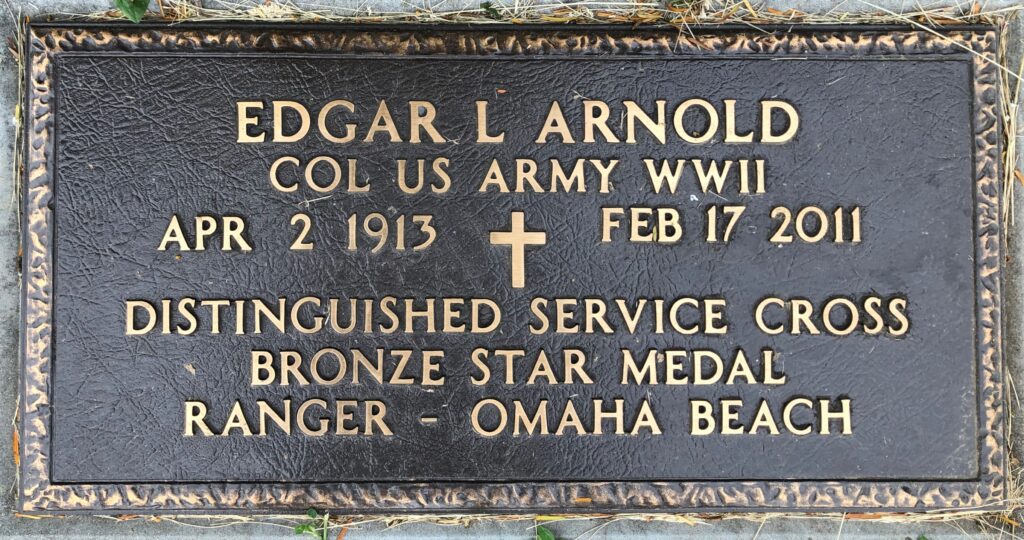
All these men made tremendous sacrifices when they stepped up to defend their country in WWII. There have been many other individuals like them since and it’s reassuring to know that the nation can still count on such devotion to duty today.
Thanks for reading this!